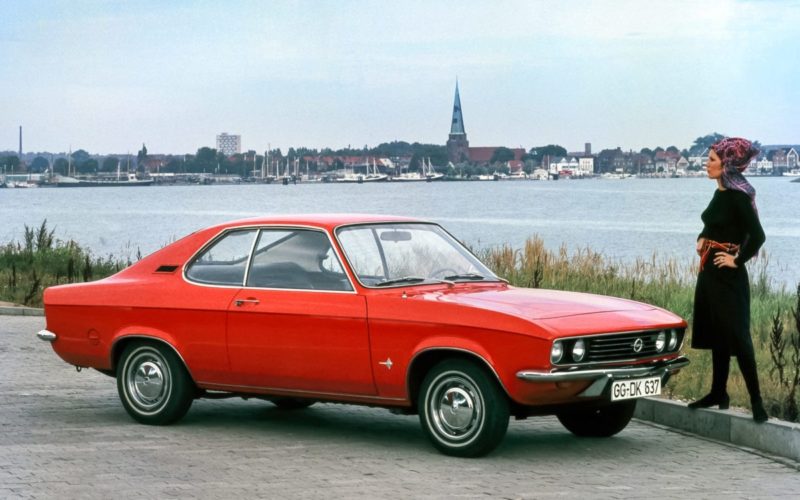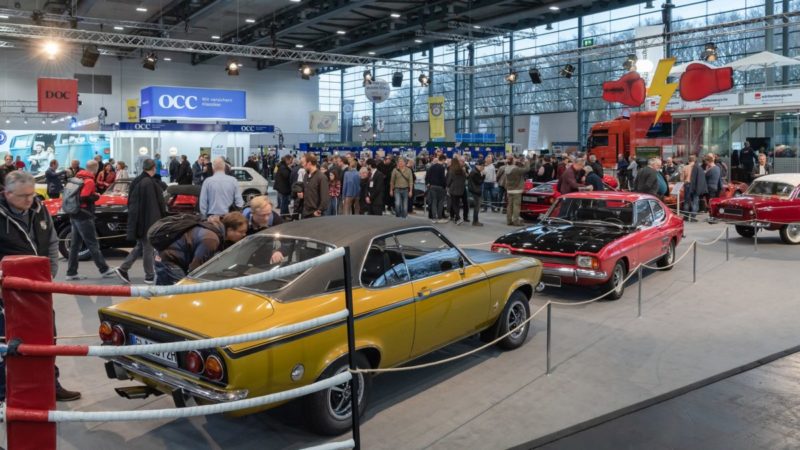The seventies have begun. The car manufacturers want to make a solid contribution from the developments of the 1970s. In 1970 it immediately hit. Years of development result in various high-profile newcomers. Moreover, many manufacturers vary widely based on existing concepts. Today part one of the fascinating car year 1970, in which we describe a number of illustrious models. We do that in several companies, because XNUMX brought several beautiful and very interesting newcomers.
Citroën GS
Citroën brings the GS in 1970. In August 1970, the French presented the avant-garde and ultra-modern middle class with progressive and complex technology. The Citroën GS gets an air-cooled four-cylinder boxer power source with 1.015 cc, the chassis has hydropneumatic suspension and disc brakes all around. Robert Opron has given the car an aerodynamic jacket. The sloping rear is a novelty for a four-door car. The GS becomes Car of the Year 1971. Citroën expands the GS series fairly quickly. In 1971, the strikingly stylized Break and the Service models follow.
Always further developed with character retention
Also develops in terms of equipment levels and engines Citroën the GS. 1.222 cc engine in particular is a welcome addition. The semi-automatic convertor transmission of February 1971 was that already. The version with Wankelmotor - the Birotor - comes at the wrong time and doesn't last very long. Fits around the mid-seventies Citroën a facelift in phases. This is visible both inside and out, but the GS mainly retains its characteristic appearance. This one Citroën retires in 1980 as GS Special (with now the 1.130 cc engine, which replaces the 1977 cc version in 1.015). At that time, the closely related GSA series has been around for a year, and it will last until 1987. The Citroën GS, he never knew an equal in his class and always kept his individuality.
Toyota Celica (1970-1977)
Within the class of sporty four-person rear-wheel drive coupes, Toyota surprises when it comes with the Celica. The new 2 + 2 coupé makes its public debut in December 1970. The Celica has a characteristic and beautiful design. The equipment levels are (market dependent). Europe mainly gets versions with the 1.6 liter engines, which, depending on the version, get faster and more powerful. The two-door LT and ST are known equipment variants. The topper for Europe, however, is the two-door Celica GT with the 2T-G engine with 2 overhead camshafts and 124 SAE-PK, limited-slip-diff and steel sports rims. Top speed? 190 kilometers per hour. Toyota makes 1.9 and (later) 2.2 engines available for America. Japan is the only market that also has a 1.4 version.
Changes and the arrival of the Liftback
In 1972 and 1974 facelift Toyota de Celica, and in 1973 the two-door coupe was joined by the liftback, the three-door version. In Europe, the Liftback comes later than elsewhere. Toyota also supplies the three-door version on our continent with two-liter engines. The 2000 GT is the top version of the Liftback.
Facelift
In 1975, Toyota once again facelifted the Celica. The most striking changes are the new front with right angles and the extended wheelbase. The bumpers had already been adjusted for specific markets. Toyota replaces the first Celica for model year 1978 replaced by the second generation. Today is the first Celica is still one of the most desirable classic Toyotas, the prices are also according to that.
Triumph Stag
De Triumph Stag was born in February 1970 after a long start-up period. Michelotti is responsible for the design of the project. Initially the intention was to turn it into a convertible, but a lack of stiffness caused the Stag to have a T-Bar. Also delivered Triumph a hardtop. Further assembles Triumph not the existing aluminum Buick V8 engine (known from the Rover P5B) but the in-house developed 3.0 liter V8 engine with cast iron block and aluminum head. Among other things, it gets two Zenith Stromberg carburetors. The engine generates 147 DIN-PK. The buyer has the choice of a three-speed Borg Warner automatic transmission or a manual four-speed gearbox. The Stag buyer can order an overdrive in combination with the manual gearbox. That appears to be a nice addition to properly cultivate the potential of the engine.
Stag: from worried child to beautiful and reliable touring car
The engine construction causes many problems. The cooling, distribution chains and warping blocks ensure the most famous failures of the Stag. Today, thanks to a great deal of specialist knowledge, a Stag is indeed reliable. In any case, he has a presence that you say to you. Fitted from 1970 to 1977 Triumph the Stag four times. Sold in total Triumph (or rather British Leyland) 25.939 copies of this beautiful touring car, moreover one of the most beautiful British classics.
Opel Manta A
In 1970 Opel strengthens its position within the (smaller) sports segment. There are already Rallye Kadetts, and in 1969 Opel presents the GT. Now Opel is expanding the range with the Manta-A, the sporty family coupé. It stems from Project 1450, from which the first Ascona also descends. The drawing of the Manta is still recognizable among thousands. Large C-pillars, the lack of the B-pillar, the wide front and the double rear light clusters per side are real features. The Manta comes on the market in September 1970 and will get a 1.6N, a 1.6S or a 1.9S engine from Opel, all linked to a manual four-speed gearbox. The “S” versions are also available in combination with an automatic transmission.
Extensions and special versions
Opel extends the program with a 1.2S version and at the top of the delivery range come the Berlinetta (also available with automatic transmission) and the illustrious 1.9 GT / E. A special version of the Manta is the TE 2800 (conceived and built in Belgium). The TURBOMANTA is also one of the illustrious special versions. The sales figures show that Opel did good business. From September 1970 to July 1975 the Germans sold 498.553 copies of this beautiful coupé. He is then succeeded by the Manta B, who effortlessly builds on the success of his predecessor.

















Good day,
In 1977 came the Toyota Corona with 5 speed gearbox from which I bought in 1980 from my neighbor, I enjoyed it very much and was exchanged for a Totota Corolla Sportwagon after 13 years.
Here are also details of or even nicer photos.
Thank you in advance.
Yours faithfully,
E. the Younger
ps have been receiving the newsletter on the PC for a few years